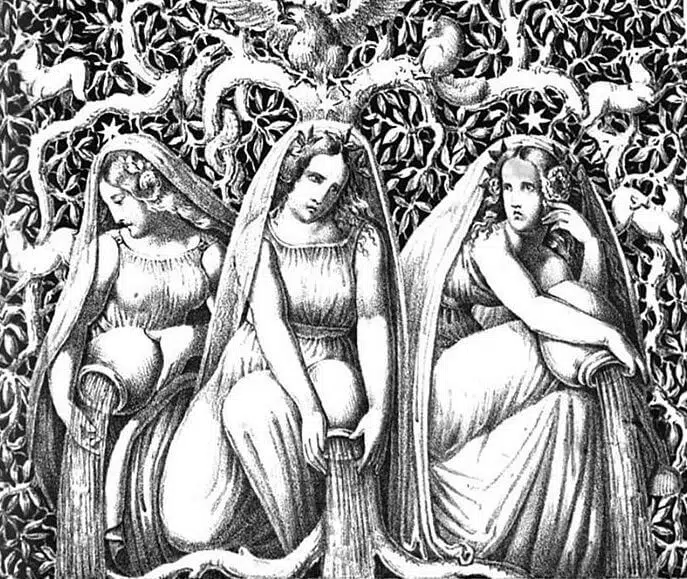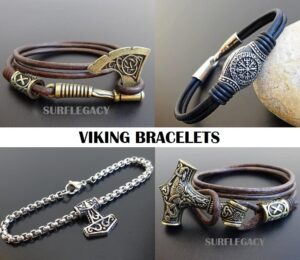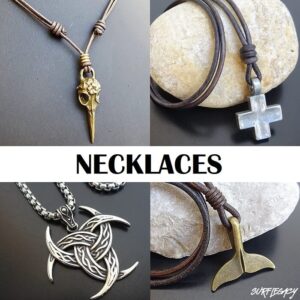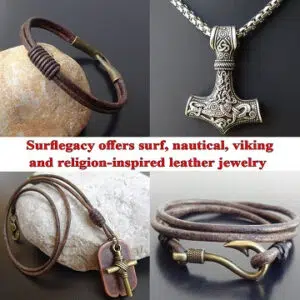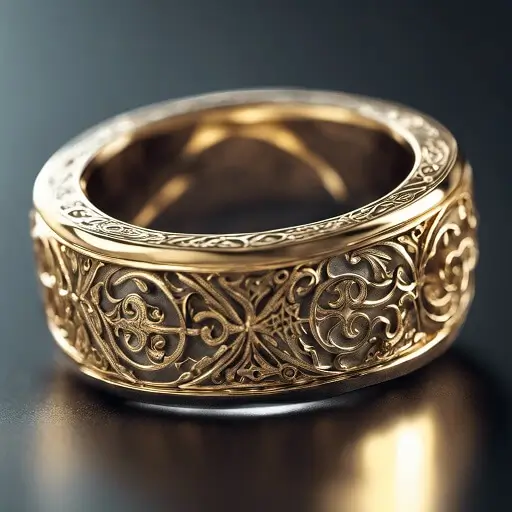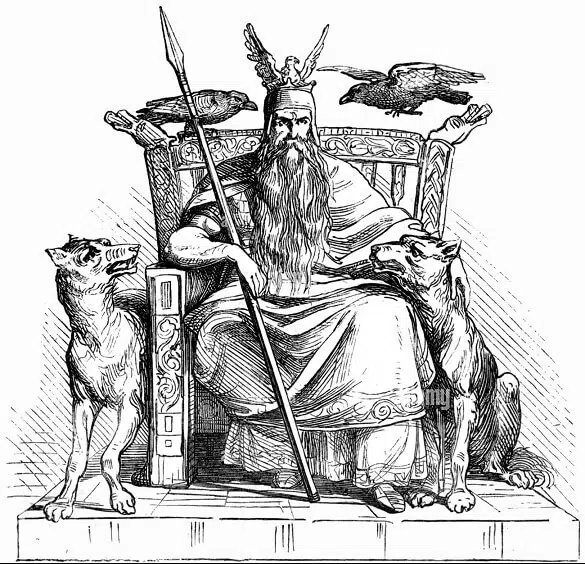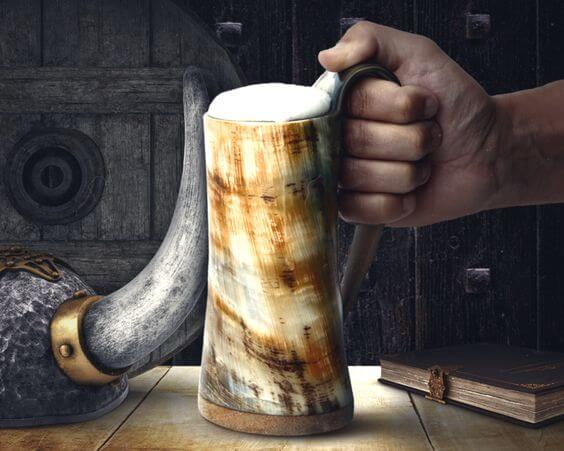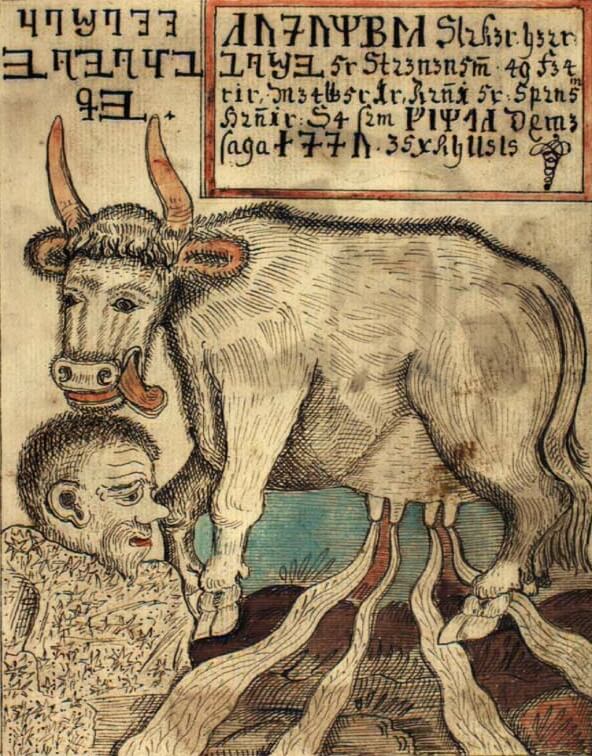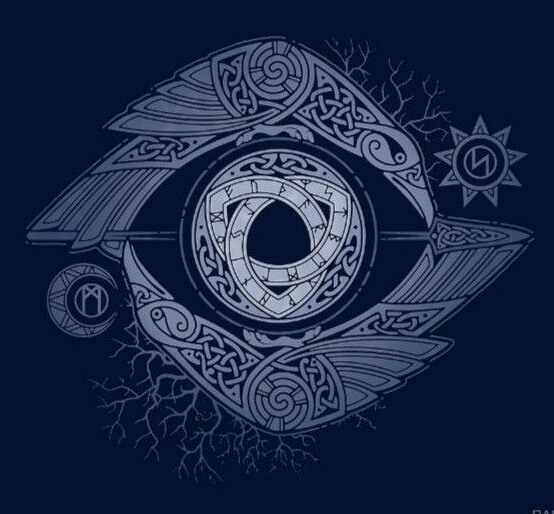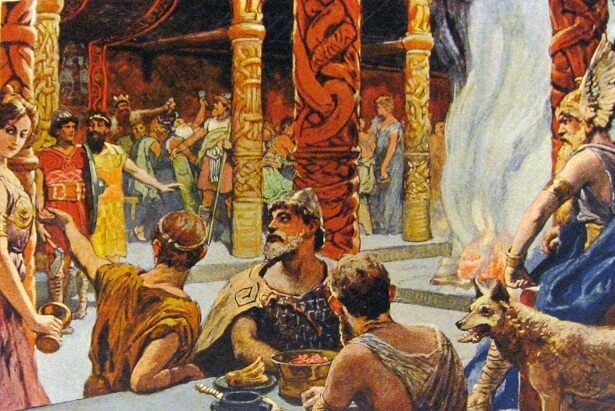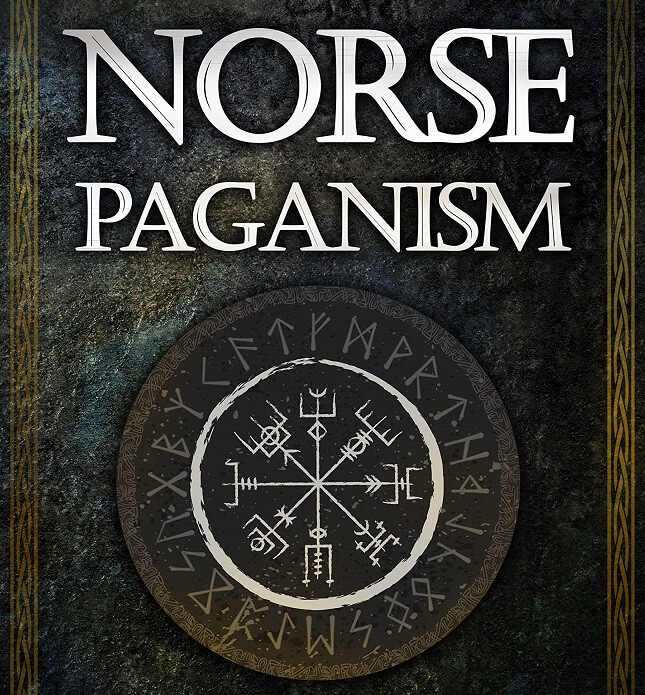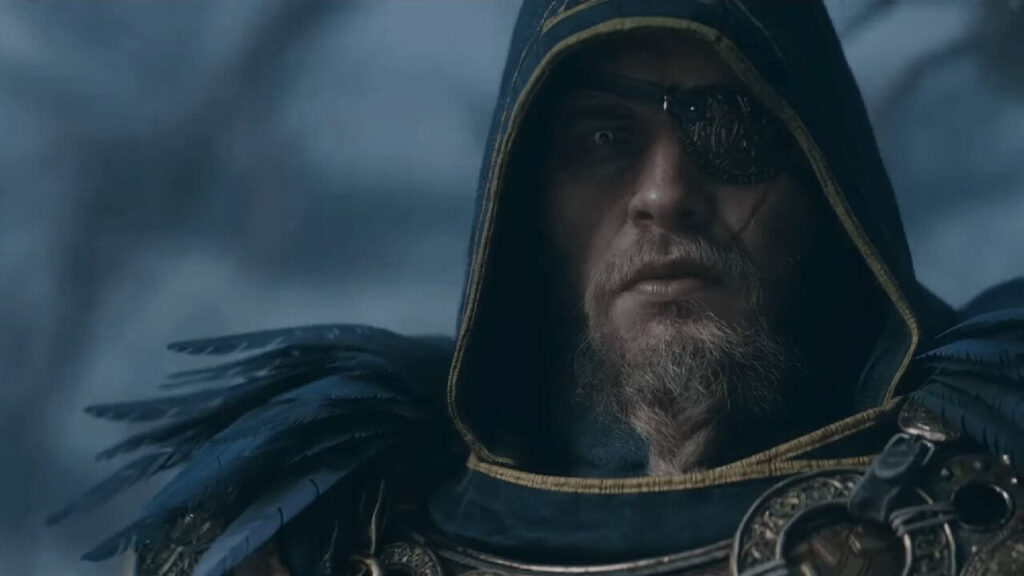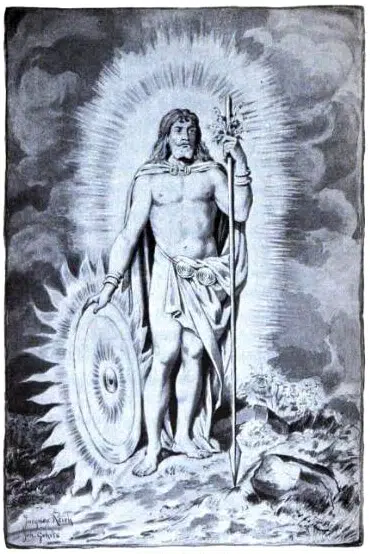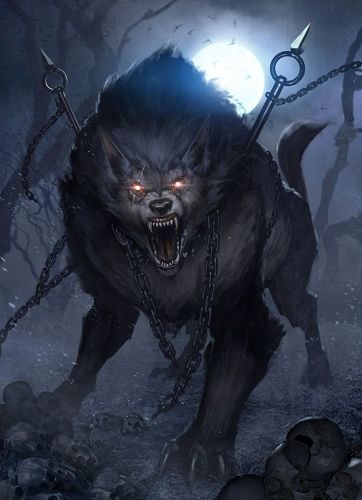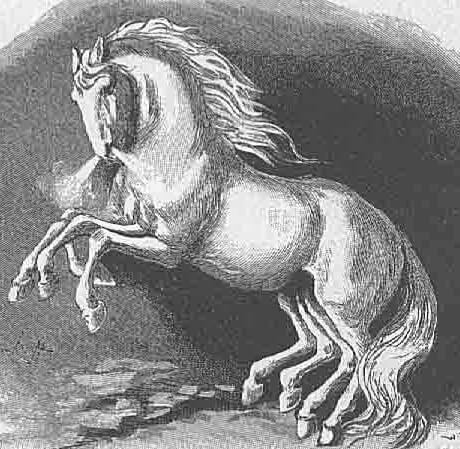The Norns, or the Fates, are a trio of goddesses from Norse mythology. They are often depicted as three powerful female figures that preside over the destiny of mortals.
These Fates are responsible for spinning, measuring, and cutting the threads of life, determining the fates of all those who come into contact with them. They are said to be able to influence the destiny of both gods and mortals alike.
The Norns are powerful and wise figures who are both feared and respected by those who believe in them. They are closely associated with fate, destiny, and fate’s unpredictability and are often seen as a representation of how life’s events and outcomes are not predetermined and can be influenced by the choices we make.
They are a reminder of the power of fate and how it can affect us in ways that we may not always anticipate or understand.
In this blog post, we will explore the mythology of the Norns and the roles they play in.
A brief overview of Norse Mythology
Norse mythology is the body of myths, beliefs, and stories belonging to the ancient Scandinavian and Germanic cultures. It encompasses the myths of the Norse gods and goddesses, as well as a variety of other myths and legends.
The pantheon of Norse gods, known as the Aesir, is led by the all-father Odin, who is the god of wisdom, war, and death. Thor, Odin’s son, is the god of thunder, while Freyja, the goddess of love and fertility, is among the most widely worshipped of the Norse goddesses.
Alongside the Aesir, there is also a second clan of gods known as the Vanir, who are associated with nature and fertility. The story of the Aesir-Vanir war lays the foundation of the relationship between these two groups of deities.
The Norse cosmology encompasses Nine realms which are held together by the world tree Yggdrasil.
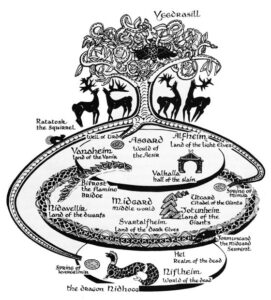
The realms are Asgard, home of the gods; Vanaheim, home of the Vanir; Jotunheim, home of the giants; Midgard, home of humans; Niflheim, the realm of ice and cold; Muspelheim, the realm of fire; Svartalfheim, home of the dwarves; and Helheim, the land of the dead.
The fate of these realms and their inhabitants is ultimately determined by Ragnarok, the Norse apocalypse, in which most of the gods, giants and monsters will perish in a great battle.
Many of the stories and myths that make up Norse mythology revolve around the struggles and conflicts of the gods, giants, dwarves, and monsters, with heroes such as Thor, Odin, and Loki playing prominent roles.
In addition to the gods, there are many other figures present in Norse myths, such as elves, dwarves, giants, and monsters, each with their own unique characteristics and stories.
The Norse people believed in a wide variety of supernatural entities and forces, and their beliefs and myths have had a lasting impact on literature, culture, and modern society.
Origin of the Norns
The origin of the Norns is a mysterious, yet fascinating, one. According to Norse mythology, the Norns were three powerful female entities who were responsible for weaving the fate of all of mankind.
They were the daughters of the primeval giant, Urðr, and were believed to have been created at the beginning of time. These three Norns were named Urd, Verdandi, and Skuld, and each had a distinct role to play in the shaping of a person’s destiny.
Each of the Norns were given a specific task, such as writing the laws of Asgard, controlling the movements of the sun and stars, and deciding who among the gods and goddesses were allowed to enter the realm of the gods.
The Three Norns
In Norse mythology, the Norns are female deities or spirits who are responsible for determining the fate of every living being from birth to death.
They are often depicted as powerful and mysterious figures, and their role in Norse mythology is to shape the destiny not just of mortals, but also of the gods and the Nine Realms.
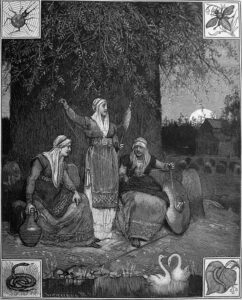
The Norns weaving the tapestry of fate
The Norns are closely associated with the concept of fate and destiny, and they are often referred to as the “Norns of Fate.” The word “norn” comes from the old Norse word “nornir” which means to “mark” or “to impose” and refers to the idea of fate being marked and imposed on the lives of individuals.
The Norns are also known as the three fates, and they are often referred to as Urdr, Verdandi and Skuld. Urdr represents the past, Verdandi represents the present, and Skuld represents the future.
Urdr is the one that determines the fate of a being at the moment of its birth, Verdandi the one that maintains the fate and Skuld the one that determines how a being will die.
It is said that they are in charge of the Well of Fate (Urdabrunnr) which is located under the roots of Yggdrasil, and from which the three norns draw water with which they water the roots of the tree, so that the fate of the worlds can be maintained.
This is seen as an important aspect of the mythology, as the Norns are not only associated with the fate of individuals, but also the fate of the Nine Realms and the gods that inhabit them.
The Norns are often portrayed as weaving the threads of fate, and it is said that they control the destinies of all living things by spinning, measuring and cutting the threads of life.
It is believed that the Norns control the fate of all living things, including gods, humans, and even the Nine Realms themselves. They are also believed to be in charge of maintaining the cosmic order, as their actions help to keep the balance between the different worlds.
In Norse mythology, the Norns are powerful figures who hold a great deal of influence over the fate of individuals and events. They are seen as mysterious and powerful beings who control the destinies of all living things and are responsible for the fate of the gods and the Nine Realms.
They are often depicted as strong, independent, and powerful women, who are in control of their own destinies and the destinies of others.
Their presence is felt throughout Norse mythology, as they are an integral part of the cosmology and their influence is felt in many aspects of daily life, in rituals and in the daily beliefs of the Norse people.
The Role of the Norns in Norse Mythology
The Norns are figures of Norse mythology who rule the destiny of gods, humans, and all living creatures. They are associated with fate, death, destiny, and the cycle of life, and are sometimes seen as the personification of destiny itself.
The three Norns, Urd, Verdandi, and Skuld, are all powerful beings who take an active role in shaping the fate of the Nine Worlds. Urd is the past, Verdandi is the present, and Skuld is the future, and these three Norns weave the fate of all living creatures.
The Norns are seen as fate’s agents, and their power and influence are seen as being analogous to that of the gods. They determine the destiny and fate of all the inhabitants of the Nine Worlds, and can even influence the gods themselves. The Norns are powerful and mysterious, and their influence is seen as being both benevolent and malevolent.
The Power of the Norns
The Norns are the fates of Norse mythology, and they are believed to have great power over life and death itself. The Norns are three sisters – Urd, Verdandi, and Skuld – who each represent a different aspect of the fate of humanity.
Urd is the past and represents the fate that has already been written, Verdandi is the present and represents the fate that is being written, and Skuld is the future and represents the fate that will be written.
The Norns are believed to be able to influence the decisions of gods and men, as well as the outcome of battles. They are said to be able to foresee events and determine the course of someone’s life. In this way, they are powerful agents of fate and can be used to shape the future.
How the Norns Affected the Fate of Gods and Men
These mysterious forces of fate were known to weave the threads of destiny for both the gods and the mortals.
It was believed that the destinies of both gods and men were predetermined by the Norns and their decisions could not be changed or avoided.
The Norns were believed to be responsible for fate and even the most powerful gods in the pantheon were not able to change the decisions of the Norns.
The role of the Norns in Norse mythology is often overlooked, but they had a great influence on the fate of gods and men alike.
How the Norns Protected the Universe
The Norns held the responsibility for protecting the universe from any and all harm, and were seen as the protectors of Asgard, the realm of the gods.
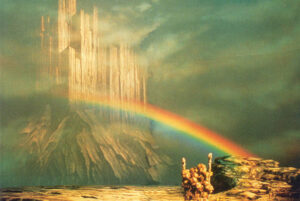
Asgard and Bifrost
They were also responsible for controlling destiny and fate, and were known to shape the outcomes of events and the destinies of all living creatures.
They would often weave fate from threads of gold, and were said to be able to see into future and past events, as well as to have knowledge of the secrets of the universe.
In Norse mythology, the Norns were symbols of strength and power, and were revered for their ability to protect the universe and its inhabitants.
Comparison to other concepts of fate and destiny in other cultures
The concept of fate and destiny is present in many cultures and mythologies around the world, and the Norns of Norse mythology can be compared to similar figures and concepts in other cultures.
In Greek mythology, the Moirai, also known as the Fates, were three goddesses who controlled the thread of life of every mortal and controlled the destinies of the gods as well.
The three Moirai were named Clotho, Lachesis, and Atropos, and they controlled the thread of life from birth to death, similarly as the Norns.
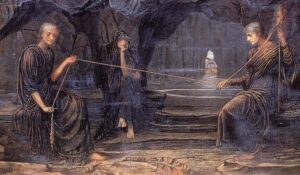
Moirai in Greek Mythology
In Roman mythology, the Fates were known as the Parcae, and like the Moirai and Norns, they were three goddesses who controlled the destinies of individuals from birth to death. They were named Nona, Decima, and Morta, with Nona representing the past, Decima the present, and Morta the future.
In Egyptian mythology, the goddesses of fate were known as the Meskhenet, Renenutet and the Imentet.
Meskhenet was the goddess of childbirth and was associated with the newborn’s fate.
Renenutet was goddess of fertility and was associated with the child’s fate as they grew.
Imentet was the goddess of death, and her role was to guide the deceased in the afterlife and to protect them from harm.
In all of these cultures, these figures have a strong association with fate and destiny, similarly as the Norns.
It can also be noted that in many cultures, fate was considered as something that was controlled by a higher power, divine or not, and that the fate of the individuals were ultimately predetermined and not something that the individuals could change or control.
All of these cultural figures, including the Norns, can be seen as powerful symbols that emphasize the importance of fate and the role of higher powers in shaping the destiny of individuals and events.
Analysis of the Norns’ relationship to the other Norse deities, such as Odin and Freyja
In Norse mythology, the Norns have a unique and complex relationship with other deities, such as Odin and Freyja. The Norns are closely associated with the god Odin, who is known as the “All-Father” and is the ruler of Asgard, the realm of the gods.
Odin is said to consult with the Norns to determine the fate of the gods and the Nine Realms, which implies that the Norns hold a great deal of power and influence over the gods and their actions.
In this sense, the Norns are seen as advisors or councilors to Odin, and their role is to provide him with guidance and wisdom in shaping the fate of the gods and the Nine Realms.
The Norns also have a strong connection with the goddess Freyja, who is associated with love, fertility, and war. Freyja is one of the most widely worshipped Norse goddesses and is often portrayed as an influential and independent figure.
The Norns are sometimes said to be her attendants, and they are associated with her as they also represent the aspect of Fate and Destiny. This association highlights Freyja as a powerful goddess who influences the fate of individuals and events in her own way, similarly to the Norns.
Additionally, the Norns are also associated with the goddess Hel, who is the ruler of Helheim, the realm of the dead. This association highlights the importance of fate and destiny in the afterlife and how it is closely tied with the actions of the Norns.
The Norns are believed to be present at the moment of death, determining the final fate of the individual, and they are believed to guide the deceased on their journey to the afterlife.
Overall, the Norns have a unique and complex relationship with other Norse deities, such as Odin and Freyja. The Norns are closely associated with these deities and are seen as powerful figures who hold a great deal of influence over the fate of individuals and events.
They are often depicted as advisors or councilors to the gods, providing them with guidance and wisdom, and their role in shaping the destiny of the gods and the Nine Realms is integral to Norse mythology.
Analysis of the symbolic meanings and interpretations of the Norns
The Norns are often associated with the concept of fate and destiny, and they are seen as powerful figures who hold a great deal of influence over the lives of mortals. This can be interpreted as a reminder of the importance of fate and the power of the gods in shaping the lives of mortals, and the Norns serves as a reminder that one’s destiny is not always in their own hands.
The Norns are also closely associated with the world tree Yggdrasil, and they are responsible for maintaining the balance of the cosmos by watering its roots with water from the well of fate.
This can be interpreted as a symbol of the interconnectedness of all things, as the well of fate is said to contain the fate of every being and the fate of the Nine Realms and the gods that inhabit them.
The Norns watering the roots of the tree could also be seen as a metaphor of the importance of maintaining balance and order in the cosmos.
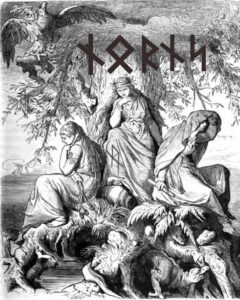
Furthermore, their role as the three fates Urdr, Verdandi and Skuld can be interpreted as representing the past, present and future, this can be seen as a reminder of how the past, present and future are all connected, and how they all shape the fate of an individual
The Norns being responsible for determining the fate of an individual from birth to death, can be interpreted as a reminder of the inevitability of fate and the cycles of life and death.
Additionally, the Norns being attendants or councilors to Odin, and having a strong connection with Freyja and Hel, can also be interpreted as symbolic of how fate and destiny are closely tied with the actions of the gods, and how the gods play a role in shaping the fate of individuals and events.
In Norse literature, the Norns also serve as a reminder of the importance of wisdom and guidance in life.
They are often depicted as wise and powerful figures who are consulted by the gods and mortals alike for guidance and wisdom, this could be seen as a symbol of the importance of seeking knowledge and guidance when facing the unknown or the fate that is yet to come.
Overall, the symbolic meanings and interpretations of the Norns in Norse sagas, legends and myths, are complex and multifaceted. They serve as powerful symbols of fate, destiny, balance, order, wisdom, and the role of the gods in shaping the lives of mortals.
Their presence in Norse literature serves as a reminder of the importance of fate, destiny and the power of the gods in shaping the lives of individuals and events.
Analysis of different interpretations of the Norns by scholars and experts
Some scholars see the Norns as powerful figures who hold a great deal of influence over the lives of mortals and the fate of the Nine Realms and the gods.
This interpretation is often based on the traditional depiction of the Norns in Norse literature, where they are often depicted as powerful and mysterious figures who are able to shape the destiny of individuals and events.
Others have seen the Norns as symbols of fate and destiny, emphasizing the importance of fate and the power of the gods in shaping the lives of mortals. They see the Norns as powerful figures who hold a great deal of influence over the lives of mortals, but also as symbols of the inescapable nature of fate.
This interpretation emphasizes the role of the Norns in maintaining the balance of the cosmos and their role in the Nine Realms and the gods.
Some scholars have also interpreted the Norns as symbolizing the concept of fate, destiny, and the cyclical nature of life and death, this interpretation highlights the idea of the three Norns representing past, present and future and the idea that fate is an unchangeable force that shapes the lives of individuals and events.
Furthermore, some experts propose the Norns as representations of a tripartite goddess, and that their roles have been more related to the cycle of life and death and the fertility aspects of womanhood and that their presence near the well of fate was not only for the maintenance of the Nine Realms and the gods, but also for the rituals and ceremonies that were related to birth, marriage, and death in Norse culture.
This interpretation also highlights the connection of the Norns to the earth and nature, and how they play a role in the cycles of life and death that are so central to Norse belief and culture.
Popular References to the Norns in Modern Culture
The Norns, the three fates of Norse mythology, have become increasingly popular in modern culture. From television shows to video games, they have been referenced in various works of art and literature. Here are some of the more popular references to the Norns in modern culture:
- Marvel Comics: The Norns are featured in Marvel Comics as the sisters of Odin, and the fate-weavers who manipulate the destinies of gods and mortals alike.
- Game of Thrones: In the HBO series, the three Norns are portrayed as the Three-Eyed Raven, and they appear in scenes of magical foresight.
- The Lord of the Rings: The Norns are featured in J.R.R. Tolkien’s The Lord of the Rings trilogy, and they are referred to as the “Three Wise Ones”.
- The Elder Scrolls Series: In the Elder Scrolls video games, the Norns are featured as the guardians of fate who control the timeline of events.
- The Witcher Series: In the Witcher video games and books, the Norns are depicted as powerful witches who live in the forests.
Comclusion
the Norns are powerful figures in Norse mythology who hold a great deal of significance and importance. They are associated with the concept of fate and destiny and are responsible for determining the fate of individuals from birth to death, as well as shaping the destiny of the gods and the Nine Realms.
They have been depicted and portrayed in various forms in Norse literature, art, artifacts, and culture and continue to be a popular and enduring aspect of Norse mythology in modern culture and literature.
The symbolism of the Norns serves to emphasize the importance of fate and the power of the gods in shaping the lives of mortals, the importance of wisdom and guidance, and the idea that everything is interconnected.
Scholars and experts have different interpretations of the Norns, but they all provide a deeper understanding of the significance and importance of the Norns in Norse culture.
In terms of final thoughts, it is worth mentioning that the Norns as figures of Norse mythology, hold a great deal of symbolic and cultural importance, not just in the understanding of the Norse belief but also for the general study of mythology.
In terms of further research, there are various aspects of the Norns and Norse mythology that could be explored in more depth. One could study the role of the Norns in Norse rituals and ceremonies, as well as their connection to the earth and nature.
Additionally, one could explore the connections between the Norns and other figures in Norse mythology, such as Odin and Freyja, and how these connections contribute to the significance and importance of the Norns in Norse culture.
Another avenue of research could be the comparison of the role and depiction of the Norns in Norse mythology with other cultures’ belief systems and the figure of the three fates.
Furthermore, it could be useful to explore the depiction of the Norns in modern adaptations of Norse mythology, such as comics, films, and video games and how these adaptations have changed and influenced the perception of the Norns in popular culture.
The ongoing relevance and impact of the Norns in modern culture and literature is an important aspect that can be studied in more depth, as well as the influence of the Norns in contemporary religious movements like heathenry or neopaganism.

